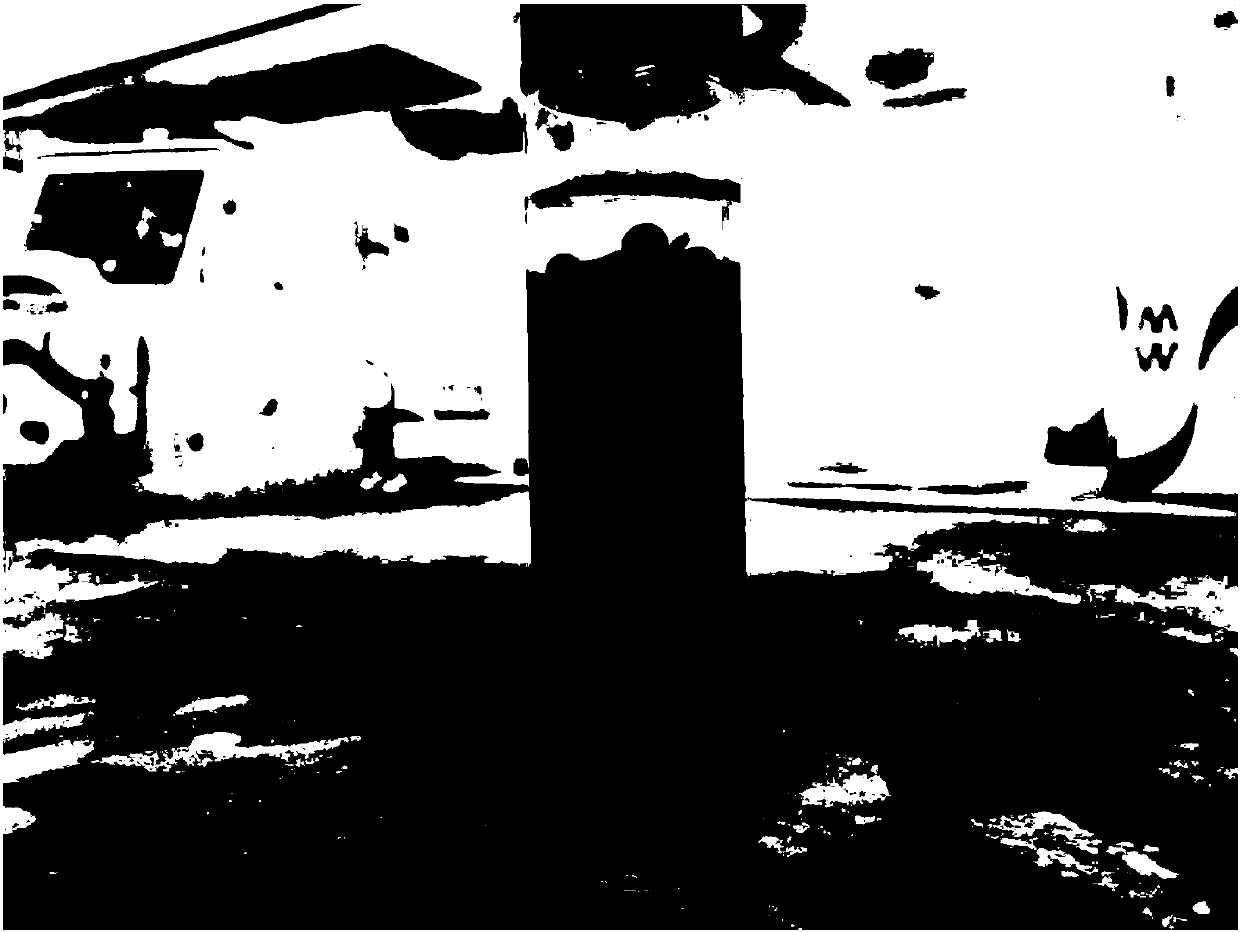Method of synthesizing carbon nanomaterial doped polyvinyl alcohol/sodium alginate gel ball adsorbent
A carbon nanomaterial, polyvinyl alcohol technology, applied in chemical instruments and methods, alkali metal compounds, alkali metal oxides/hydroxides, etc. Mechanical properties, strong adsorption effect
- Summary
- Abstract
- Description
- Claims
- Application Information
AI Technical Summary
Problems solved by technology
Method used
Image
Examples
Embodiment 1
[0031] (1) 200 mg of graphite oxide powder was placed in 100 mL of deionized water, and after stirring evenly, the solution was placed in an ultrasonic apparatus to ultrasonicate for 3 h, so that the graphite oxide was exfoliated into a graphene oxide water dispersion system;
[0032] (2) Dissolve 1 g of polyvinyl alcohol solid in 10 mL of deionized water at 50°C in a hot water bath, stir with a glass rod at intervals of 10 minutes, take out when the polyvinyl alcohol is completely dissolved, and let stand until it returns to normal temperature;
[0033] (3) adding the dissolved polyvinyl alcohol in step (2) together with 2.0g sodium alginate into 100mL mixed carbon nanomaterial dispersion system, stirring mechanically until fully mixed, and placing for 2h to make the bubbles in the mixed solution disappear;
[0034] (4) dissolving boric acid and calcium chloride in water, and adjusting pH to neutrality to prepare a 3% boric acid-5% calcium chloride mixed solution;
[0035] (5...
Embodiment 2
[0037] (1) Place 500 mg of graphite oxide and 500 mg of multi-walled carbon nanotubes in 100 mL of distilled water, stir evenly, and place the solution in an ultrasonic instrument to ultrasonicate for 5 hours to prepare a mixed carbon nanomaterial dispersion system;
[0038] (2) Dissolve 0.5 g of polyvinyl alcohol solid in 10 mL of deionized water in a 70°C hot water bath, stir with a glass rod at intervals of 10 minutes, take out when the polyvinyl alcohol is completely dissolved, and let stand until it returns to normal temperature;
[0039] (3) adding the dissolved polyvinyl alcohol in step (2) together with 2g sodium alginate into 100mL mixed carbon nanomaterial dispersion system, stirring mechanically until fully mixed, and placing for 2h to make the bubbles in the mixed solution disappear;
[0040] (4) dissolving boric acid and calcium chloride in water, and adjusting pH to neutrality to prepare a 5% boric acid-1% calcium chloride mixed solution;
[0041] (5) drop the mi...
Embodiment 3
[0043] (1) Place 200 mg of graphite oxide and 100 mg of graphene quantum dots in 100 mL of distilled water, stir evenly, and place the solution in an ultrasonic apparatus to ultrasonicate for 5 h to prepare a mixed carbon nanomaterial dispersion system;
[0044] (2) Dissolve 2g of polyvinyl alcohol solids in 10 mL of deionized water in a 70°C hot water bath, stir with a glass rod at intervals of 10 minutes, take out when the polyvinyl alcohol is completely dissolved, and let stand to restore normal temperature;
[0045] (3) Add the dissolved polyvinyl alcohol in step (2) together with 5g of sodium alginate into 100mL mixed carbon nanomaterial dispersion system, stir mechanically until it is completely mixed, and leave it for 2h to make the bubbles in the mixed solution disappear.
[0046] (4) Dissolving boric acid and calcium chloride in water, and adjusting the pH to neutrality to prepare a 3% boric acid-5% calcium chloride mixed solution.
[0047] (5) drop the mixed solution...
PUM
 Login to View More
Login to View More Abstract
Description
Claims
Application Information
 Login to View More
Login to View More - R&D
- Intellectual Property
- Life Sciences
- Materials
- Tech Scout
- Unparalleled Data Quality
- Higher Quality Content
- 60% Fewer Hallucinations
Browse by: Latest US Patents, China's latest patents, Technical Efficacy Thesaurus, Application Domain, Technology Topic, Popular Technical Reports.
© 2025 PatSnap. All rights reserved.Legal|Privacy policy|Modern Slavery Act Transparency Statement|Sitemap|About US| Contact US: help@patsnap.com

